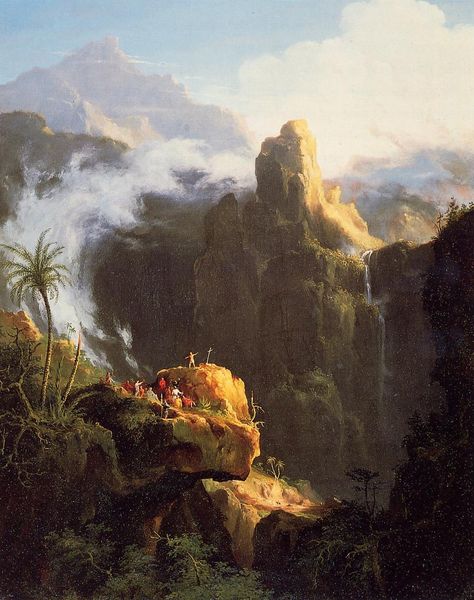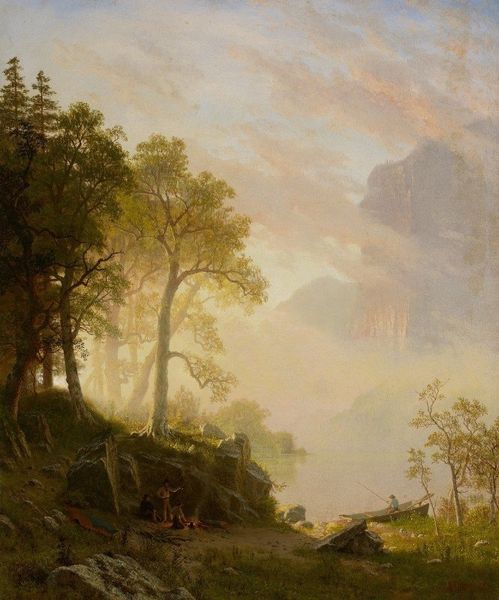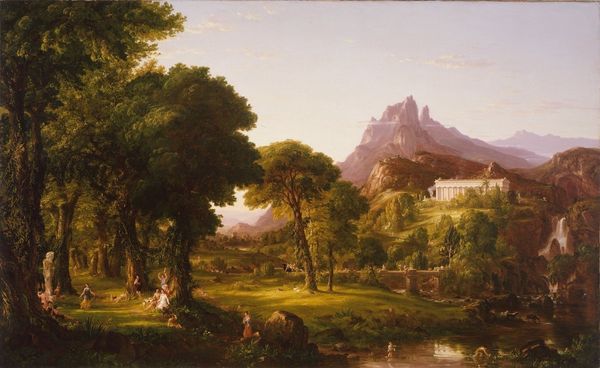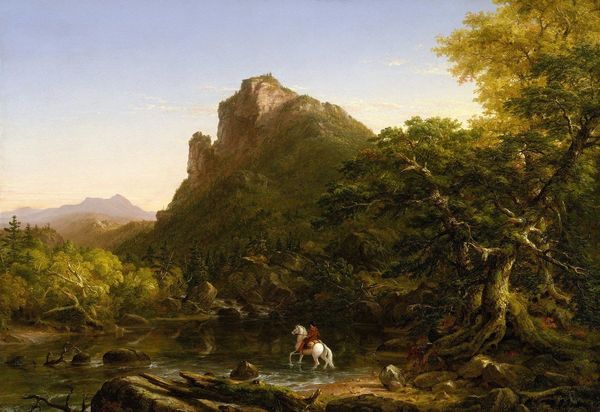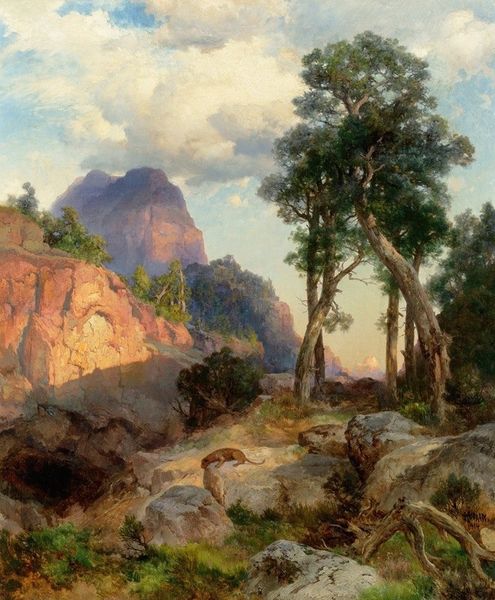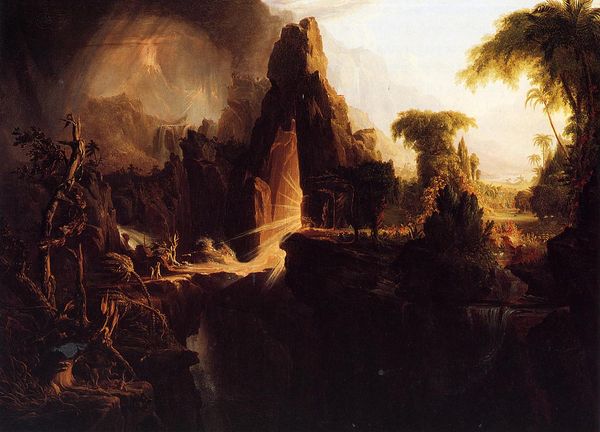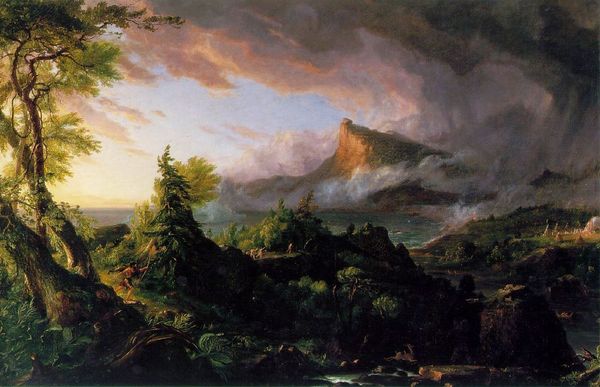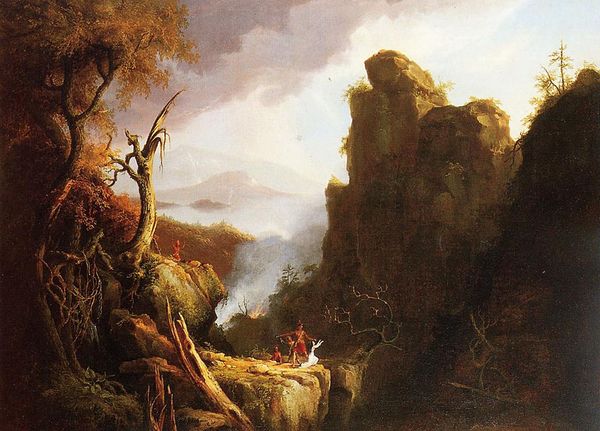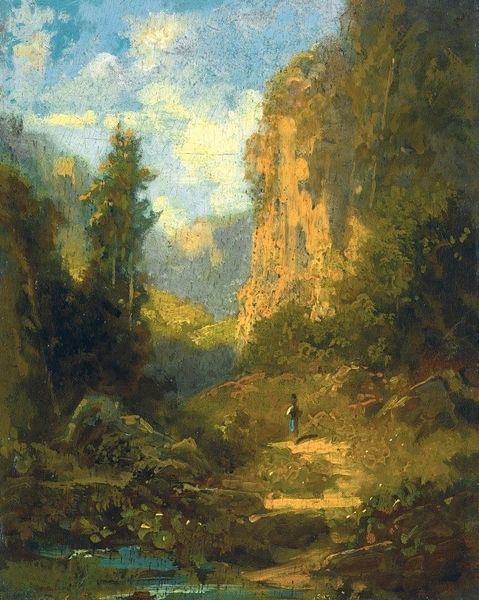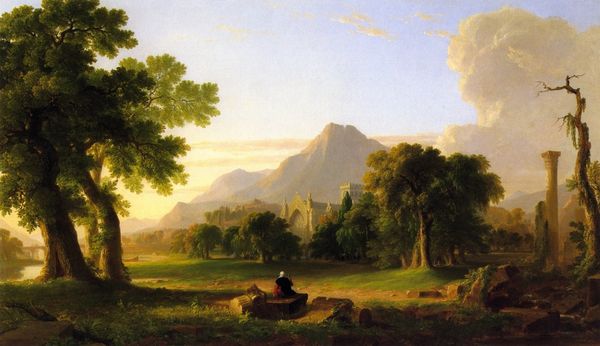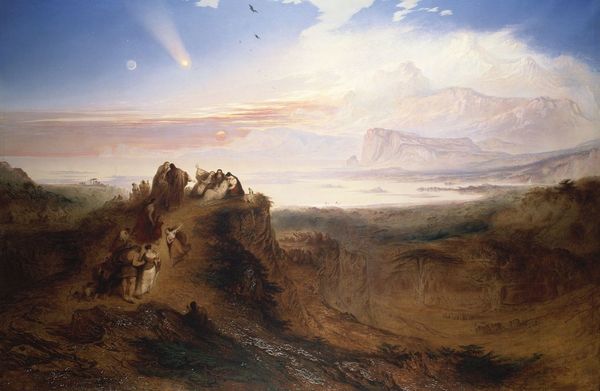
painting, oil-paint
#
tree
#
allegory
#
painting
#
oil-paint
#
landscape
#
figuration
#
oil painting
#
forest
#
romanticism
#
mountain
#
hudson-river-school
#
history-painting
Dimensions: 52 x 78 cm
Copyright: Public domain
Curator: Thomas Cole, a central figure in the Hudson River School, painted "The Voyage of Life: Childhood" around 1840. This allegorical scene, rendered in oil, kicks off a series depicting life's journey. Editor: It’s so idyllic! A real paradise... The texture of the foliage almost makes me feel like I could reach out and touch it. Look at the sheer abundance! I can almost smell the blossoms. Curator: Indeed. It embodies the Romantic fascination with unspoiled nature, reflective of Cole's anxieties regarding industrial encroachment upon the American landscape. This "childhood" stage presents a pre-industrial, Edenic vision. Note how the meticulously rendered detail emphasizes nature's bounty. Editor: Right, a vision manufactured through paint. I wonder, what sort of brushes did Cole use to get such delicate details in the floral arrangements? And what about the source of his pigments? Was he grinding them himself, or buying them pre-made? The process is obscured here, in favor of an overwhelming illusion. Curator: Good point. The romanticizing of the landscape conveniently ignored the means and materials of its very representation. His paintings fed a yearning for an untouched wilderness, reinforcing a specific narrative of American expansion, while his affluent patrons collected these paintings. Editor: Yes, paintings that were commodities, and supported Cole’s existence. Was he critiquing the very economic system that enabled his art? Or simply participating in the mythology, furthering the alienation between viewers and the sources of their material wealth? Curator: It is definitely complicated. His art functions both as celebration and critique, simultaneously benefiting from and questioning the dominant ideologies. The very public display of these works within established institutions underscores their ambiguous role. Editor: I'll certainly look at Romantic landscapes differently from now on. Knowing the pigments were purchased and the brushstrokes made, as a commodity, changes how one considers the composition. Curator: Precisely. And understanding its public display context helps us grasp the broader societal implications of its imagery.
Comments
No comments
Be the first to comment and join the conversation on the ultimate creative platform.

